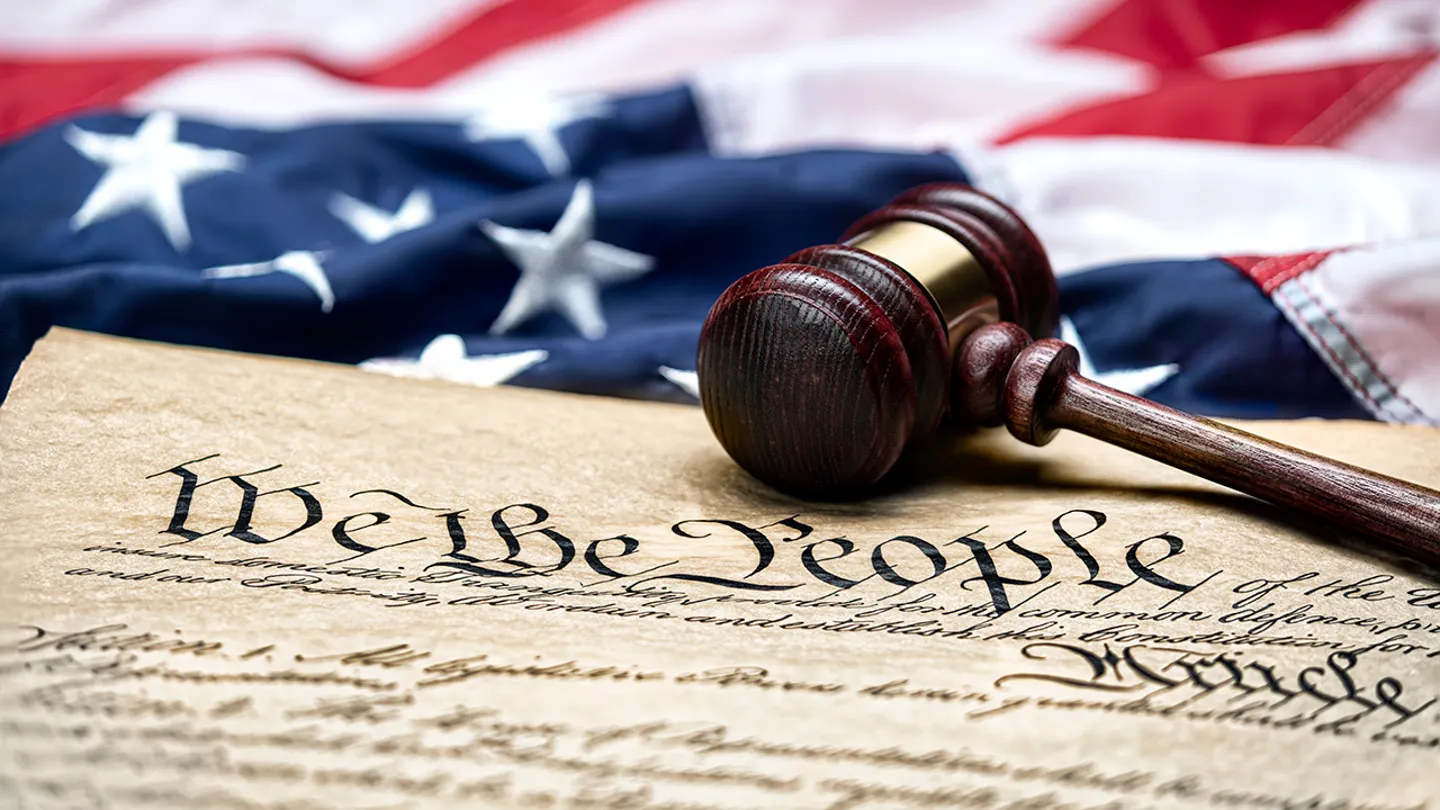
The U.S. Constitution was ratified by nine of the 13 states, making it binding. (iStock)
If you want to understand how a bill becomes a law in the US, this guide walks through every major step — from the moment a member of Congress drafts an idea to the point the law is codified in the U.S. Code. The process can seem slow and complex, but each stage is designed to check policy, gather input, and ensure laws are carefully considered before they affect millions of people.
1. Idea and drafting: the origin of a bill
The first step in how a bill becomes a law in the US is an idea. Ideas come from many places: members of Congress, the president, federal agencies, state governments, interest groups, or private citizens. A member of the House or Senate sponsors the idea and works with congressional staff, legislative counsel, and subject-matter experts to draft the bill’s text. The draft will include the proposed legal language and an explanation of its purpose.
2. Introduction and referral to committee
Once a member introduces the draft in their chamber, the clerk assigns it a bill number (e.g., H.R. for House bills, S. for Senate bills). That introduction is the formal start of how a bill becomes a law in the US. The presiding officer refers the bill to one or more committees with jurisdiction over the subject area — for example, an education bill goes to the education committee.
3. Committee and subcommittee review
Committees are where much of the detailed work occurs. The committee chair may send the bill to a relevant subcommittee for hearings. During hearings, witnesses (experts, officials, stakeholders) provide testimony and answer questions. Committees and subcommittees can:
- Hold hearings to gather information.
- Amend the bill in “markup” sessions (a line-by-line review).
- Vote to report the bill to the full chamber with a committee report that explains the bill, its costs, and arguments for and against it.
If a committee declines or “table” the bill, the bill may die there — a common filtering mechanism in how a bill becomes a law in the US.
4. Floor consideration, debate, and voting
If the committee reports the bill favorably, it goes to the full chamber (House or Senate) for debate. The rules for floor consideration differ between the chambers:
- House of Representatives: The House Rules Committee typically sets terms for debate and amendments. Most bills follow the Rules Committee’s parameters.
- Senate: Debate is traditionally unlimited. To end debate and prevent a filibuster, the Senate uses cloture, which currently requires a supermajority (usually 60 votes) for most legislation.
Both chambers debate, may offer additional amendments, and vote. Passage requires a majority vote in the originating chamber.
5. Passage in the other chamber
After one chamber approves a bill, it goes to the other chamber (House→Senate or Senate→House) and follows a similar committee and floor process. Often the second chamber will pass the bill with amendments. At that point, the two versions must be reconciled — a key step in how a bill becomes a law in the US.
6. Conference committee and agreement
If the House and Senate versions differ, leaders may form a conference committee made up of members from both chambers. The committee negotiates and produces a compromise bill (the conference report). Both chambers then vote on the conference report. If both approve the identical text, the bill moves to the president.
7. Enrolling and sending to the President
Once both chambers have passed identical legislation, the bill is “enrolled” — the final official copy is prepared and sent to the president. This is a short but formal stage in how a bill becomes a law in the US.
8. Presidential action: sign, veto, or pocket veto
The president has several choices upon receiving the enrolled bill:
- Sign the bill: It becomes law.
- Veto the bill: The president returns the bill with objections to Congress. Congress can override the veto with a two-thirds vote in both chambers; if successful, the bill becomes law despite the veto.
- Take no action for 10 days while Congress is in session: The bill becomes law without the president’s signature.
- Pocket veto: If Congress adjourns within the 10-day review period and the president does not sign the bill, the bill does not become law. This is called a pocket veto and cannot be overridden.
9. Publication, numbering, and codification
When a bill becomes law, it is assigned a public law number and published in the Statutes at Large (the official chronological collection of laws). Congressional Research Service summaries and committee reports become public record. Many laws are then organized—or codified—by subject into the U.S. Code, the permanent codification of federal statutes. This codification helps citizens, lawyers, and officials find the law under topical headings.
10. Implementation and oversight
Passing a law is not the final step in how a bill becomes a law in the US; federal agencies often write regulations to implement the law. Agencies publish proposed regulations, allow public comment (under the Administrative Procedure Act), and finalize rules. Congress and the courts also exercise oversight and review to ensure laws are implemented as intended.
Special procedures to know
There are a few important exceptions and fast-track procedures in the legislative process:
- Budget reconciliation: Allows certain budget-related measures to pass the Senate with a simple majority, bypassing the 60-vote cloture threshold for filibusters, but is limited to provisions that affect federal revenue or spending.
- Emergency/fast-track measures: Certain declarations or continuing resolutions can hasten action, especially for funding the government.
- Resolutions: Simple and concurrent resolutions express the sense of a chamber or both chambers and do not have the force of law; joint resolutions can create laws when signed by the president.
Final thoughts
Understanding how a bill becomes a law in the US reveals why legislative change can take time and why public input at the committee and comment stages matters. From drafting and committee scrutiny to presidential decisions and agency implementation, the process balances deliberation, transparency, and accountability — even if it sometimes feels slow. If you want to follow a specific bill, the official Congress website provides bill texts, summaries, committee actions, and voting records to track progress in real time.
Follow TNN for latest US NEWS TODAY!






